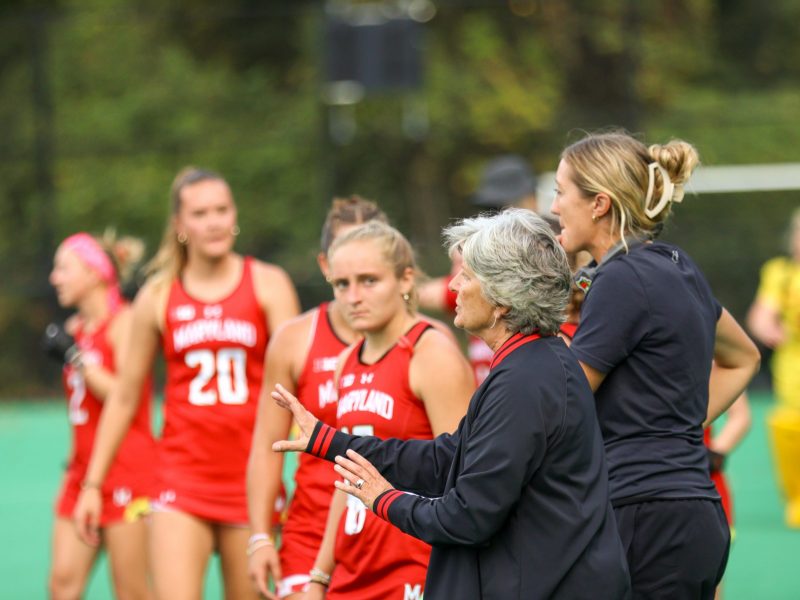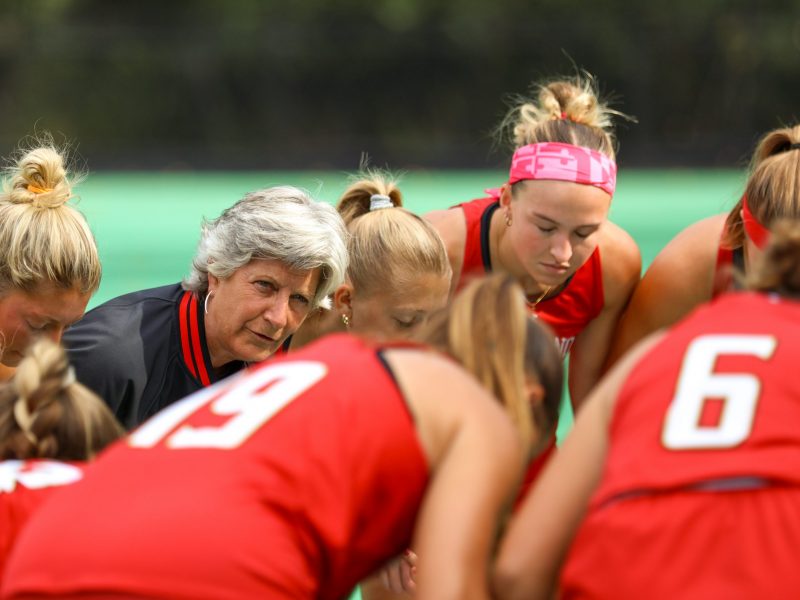Fred the frog. Shep the sheepdog. Silky the spider.
They’re characters from a children’s book, and even though Maryland field hockey coach Missy Meharg may chuckle as she recites them, she and the rest of her team don’t just know their names for laughs. They remember Fred, Shep, Silky and others because they’ve played an important role in building team chemistry.
The book they come from, Inch and Miles: The Journey to Success, was written by legendary UCLA men’s basketball coach John Wooden. In the story, Wooden helps lead Inch (an inchworm) and Miles (a mouse) on a journey, teaching them his 14 building blocks to achieve success.
During the preseason, the Terps spent an off-day at Meharg’s home, where she distributed a copy of the book to each of her players with a personalized message on the first page. She wanted to start a conversation about the team’s values and each player’s contribution to the team.
“She had everyone go and read the books by themselves,” midfielder Lexi Silver said. “And once we read through it, we had to think about which block we thought represented our top Terp and they did the same for us.”
Along with the book, the coaches divided the Terps into pairs. The younger players on the team were grouped with a veteran teammate whom they referred to as their “top Terp.”
Meharg wanted each of her players to think about which trait they bring to the team, and also identify what their partner contributes.
Then, in Philadelphia before the team’s season opener, everyone shared their thoughts.
“Before we started the weekend, we sat in a room and we said what we thought our top Terp was and they said what we were,” midfielder Kelee Lepage said.
The team was pleased with the results. The players’ responses covered 13 of the 14 building blocks, and the only one not identified — enthusiasm — was the block Meharg and the coaching staff claimed as the trait they embodied themselves.
“The cool thing was all of these blocks had animal names for them; determination was Fred the frog, loyalty was Shep the sheepdog,” the 29th-year coach said. “It was just really fun. They had a good time with it.”
Plus, the groups led to some fun results. Meharg estimated that seven of the pairings picked the same traits for themselves as they did for their partner. Senior defenders Courtney Deena and Grace Balsdon, for example, were both confidence.
The exercise, however, wasn’t just a preseason icebreaker or a fun way to keep loose before starting the 2016 campaign.
“[Meharg said] she’s been reading about coaches’ philosophies and she liked Wooden’s the most,” Lepage said. “I think she read this book and was like, ‘Ooh, perfect book to share with my team.'”
Though Meharg said she doesn’t have many coaching mentors, she points to Wooden’s messages as having an impact on her career.
“He’s a legend in the way he teaches through sport,” Meharg said. “Plus, I think playing games in a children’s state of mind is really important, so I chose a children’s book. It’s a great opportunity for the women to define themselves and to identify our team culture.”
As the team went over their presentations, the coaching staff took notes on which traits belonged to each player. Now, the information is in a spreadsheet that the coaches can access on their phones.
They kept those records because, over the weekend, midfielder Anouk van Asbeck, an art major, and defender Marissa Cutry, an architecture major, will recreate the pyramid Wooden’s building blocks created at the end of the book.
Van Asbeck and Cutry’s creation will stay in the Terps’ locker room for the rest of the season. It won’t be an exact replica of Wooden’s, though, because the Terps will arrange the blocks according to how common the traits were on the team.
Still, the top piece won’t change. The goal Wooden helped Miles and Inch reach is the same one Meharg is hoping to lead her team to: success.


